I think that most images come from other images. When you make pictures, do you keep certain images or styles in mind during a project?
Alnis Stakle (AS): I don’t like to compare photography with literature, but in this context it fits right. I agree that pictures just like words in a language acquire meaning and sense in a context of other words and meanings. While working on any of my projects, I surely follow some certain aesthetical qualities. Though, I want to emphasize that each work series’ aesthetical qualities are primarily defined by the idea.
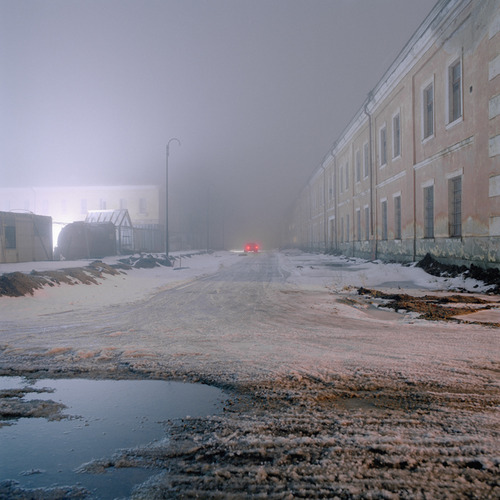
© Alnis Stakle from the series 'Not even something'
I can’t mention any particular photography school whose tradition would be the basis for my works. The reason is Latvia does not have any united photography school. Until 1990 we were under the rule of Soviet Union and at that time critical thinking about media messages was prohibited. After 1990 the visual culture of Latvia encountered unregulated flow of media messages from Western countries, which included both historical images and testimonies of contemporary culture. I assume that American and Japanese photographer works influenced me the most, but I get my inspiration from day-to-day life and all sorts of the little nothings of life…
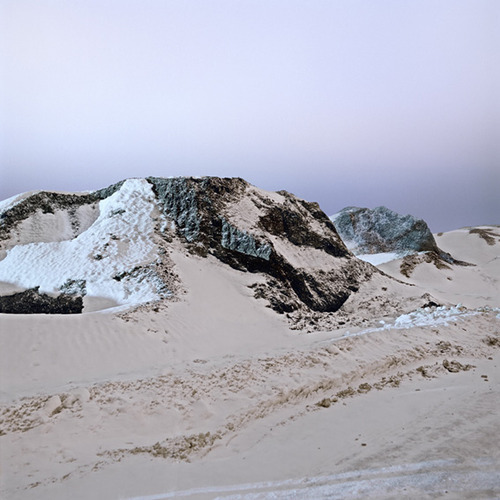
© Alnis Stakle from the series 'Not even something'
In 'Not Even Something' the snow hides the details yet reveals the shape of the landscape. What roles do these snowscapes play in our/your experience of this Land?
AS: Cold and chilly weather in Latvia is a relatively common phenomenon – approximately 6 to 7 months in a year. Snowy landscapes are annual phenomenon in winter months. I think that a nationality’s mentality to a great extent is defined by geographical context. I think that the way people comprehend themselves in the environment and society, the way they move around in a landscape, the way they explore landscape and which things and processes they attach importance to are influenced by the features of the landscape. Though I have to admit, that for me as an artist who takes photos of interspaces between districts of the city in the landscape at night, the snowscapes look completely different than to someone who passes there in daylight or looks at my photos. Almost nothing can be seen in the places where I take photos at night. And thanks to long exposure these landscapes appear very light and friendly. In my turn, photography often becomes an extreme movement experience in the city environment.
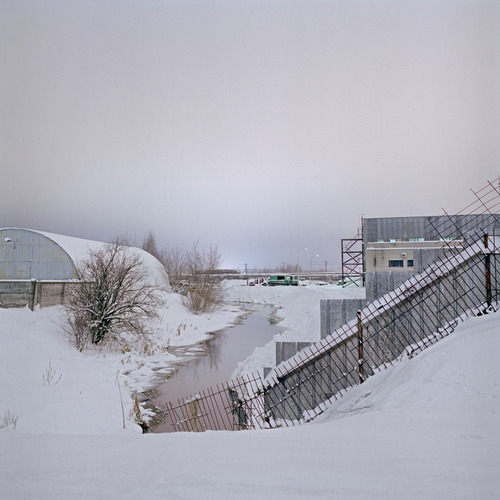
© Alnis Stakle from the series 'Not even something'
In 'Not Even Something' the viewer is complicit in these pictures because of the deep perspective. Do you use perspective to create tension?
AS: Of course I take into consideration the rules of composition while constructing an image. Though I pay more attention to the idea and place, when I take a photo and this is what defines basic principles of the images’ structure. To understand works from this series it is necessary to know Post Soviet city features. The city I live in is not very big and during Soviet time (till 1990) the territory of the city was usually divided into districts and as often as not these districts differ not only with different names but also different functions within the city environment.
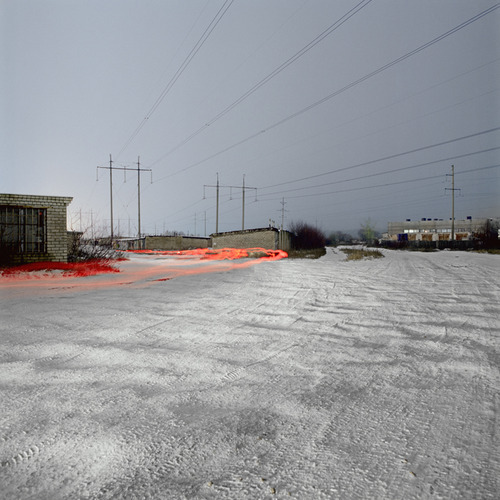
© Alnis Stakle from the series 'Not even something'
For example industrial factory districts, garage districts, residential districts, allotments etc. After the fall of Soviet Union many of these districts lost their function. For instance factories were closed, fences were partly dismantled, everything grew over with bushes and people started to use these factory territories as shortcuts to get to certain destinations in the city. Surely there is public transportation in the city that connects city districts, but in the evening and at night it is easier to pass through these territories on foot. Thus new pathways and roads appeared though they are not on the official map of the city. In its turn some areas appeared on the map of the city, which are never the destination for residents’ journeys, but are always an intermediate section between the important parts of the city. In this series’ works I explored these “ghost areas” at night, which stereotypically is the most dangerous time to stay there. Pedestrian beaten tracks as often as not defined the aesthetical basic principles of the structure of work.
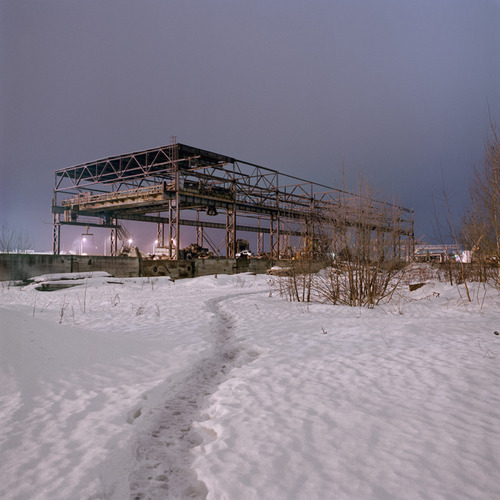
© Alnis Stakle from the series 'Not even something'
Although very different, 'Ilgas' seems to refer to Roger Ballen and his interest in drawing and gesture. Please comment.
AS: I know works of Roger Ballen, however works from 'Ilgas' series are more associated with documentary photography tradition, because I did not construct anything to take these pictures. All that is seen in the images was found there. All the drawings, inscriptions and objects were made or brought by the residents. The moment when I in that half-destroyed palace saw 45 young girls, who lived there in extreme conditions, all that seemed visually impossible and unexplainable to me – combination of young women and crumbled interior seemed artificially constructed… That is one of the reasons why I wrote about these works and mentioned the constructed and surreal nature of documentary photography. In spite of the traditional documentary origin of these works, for me they function more as an irony and sarcasm about documentary narrative.

© Alnis Stakle from the series 'Not even something'
'L.S.D' is essentially monochromatic. We are asked to first look at the center of the square where we often find a splash of color. The color in this project and a few others is subdued and contrasts with the surrounding somber tones. Please comment
AS: This is one of my long-term work series. I deliberately used color photography aesthetics to impart additional layers of meaning to the documentary photography message. Although I have to admit that images came into being as a result of a natural and long-term observations of the city environment. Post Soviet cities’ architecture is grey and mostly dispiritingly homogenous. It can especially be felt during autumn and winter months. Then each colourful object or a passer-by dressed in bright clothes fixes the eye. This perceptual experience is the basis of 'L.S.D.' series.

© Alnis Stakle from the series 'Not even something'
Tell us about the man making the fire in “L.S.D.. It looks methodically composed yet the fire says something else.
AS: Actually, this work is traditionally documentary. That is the view from my former apartment’s window. There were some garages and a man was doing something with a blowlamp. This work fitted in well with the collective message of L.S.D. works. In my opinion, secret photography from the window is the nearest method to the voyeuristic nature of photography. I have several work series which are taken only from my apartment’s window.

© Alnis Stakle from the series 'Not even something'
A very different approach is found in 'Nothing Personal' I see the similarities of interest between this work and Ralph Gibson, Ralph Eugene Meatyard and that other American southerner Clarence John Laughlin. All were interested and used the idea of the mask within a photographic context. Please comment.
AS: Works from 'Nothing Personal' series are one of the most long-term and characteristic works. It is not exactly right to call them series of work or project, because these works were created more as personal diary in the period of time between 1996 and 2006. I really did take some of my self-portraits using African masks, though the biggest amount of the images is just self-portraits in my living-space. Psychologically of course any posture and gesture can be interpreted as a mask, especially related to a photographic image.
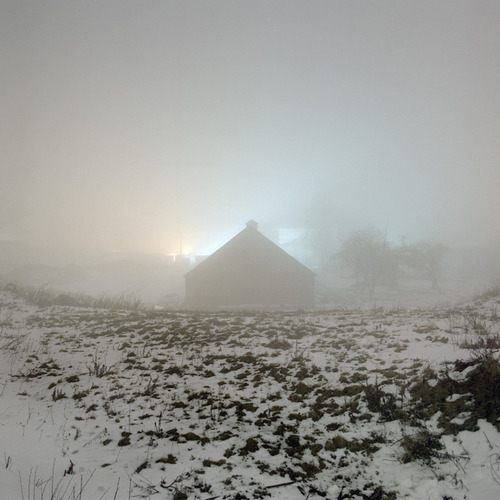
© Alnis Stakle from the series 'Not even something'
You have recently been using the square format . Could you tell us something about how this affects your way of seeing?
AS: I have been using medium format camera since the beginnings of my creative activity. For instance some works in 'Nothing Personal' series have been taken in 1996. Each camera has its own “rhythm”. Medium format cameras usually slow down the process of photography and it becomes more meditative, and in its turn the aesthetics of the image become more estranged.
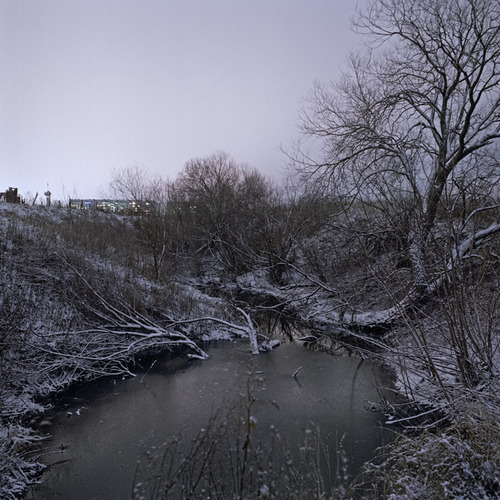
© Alnis Stakle from the series 'Not even something'
Please tell us about what influences your work and particularly what are some of your literary interests.
AS: To me there are many artists whose works are inspirational. I will mention – Boris Mikhailov, Antoine d’Agata, Larry Clark, Daido Moriyama, Saul Leiter. I don’t think that in my works you could find visual evidences for my inspiration from their works, their works inspired me with their particular approach to the world and themselves, looking, thinking and engaging in photography.
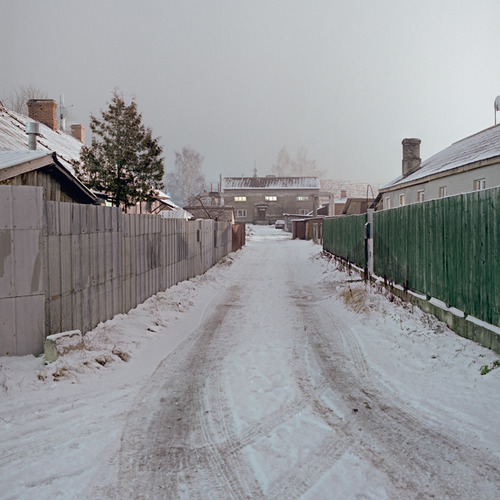
© Alnis Stakle from the series 'Not even something'
I teach photo journalism and creative photography courses in Rīga Stradiņš University (Latvia) and I am forced to read different kinds of books on visual culture. That most likely is my basic literature. Now on my desk lays a book that I have started to read –What Is Philosophy? by Gilles Deleuze, Felix Guattari.
---
LINKS
Alnis Stakle
Latvia
share this page